Karolina Prawda
Perceptual Evaluation of Extrapolated Spatial Room Impulse Responses From a Mono Source
Oct 06, 2025Abstract:Immersion in virtual and augmented reality solutions is reliant on plausible spatial audio. However, plausibly representing a space for immersive audio often requires many individual acoustic measurements of source-microphone pairs with specialist spatial microphones, making the procedure time-consuming and expensive. In this study, we evaluate the plausibility of extrapolated and spatialised Room Impulse Responses (RIRs) by using a 3-Alternative Forced Choice (3AFC) listening test. The stimuli comprised of RIRs from three spaces convolved with speech, orchestral, and instrumental music. When asked to select which stimuli was artificial out of one extrapolated and two real stimuli, an overall accuracy of 38% was achieved from 20 participants (5 percentage points above the expected guessing rate). Given the listening test result, this study shows that it is possible to extrapolate plausible spatial RIRs from mono measurements, decreasing the need for time and specialist equipment in acoustic measurements.
Sensitivity of Room Impulse Responses in Changing Acoustic Environment
Jan 02, 2025



Abstract:Changes in room acoustics, such as modifications to surface absorption or the insertion of a scattering object, significantly impact measured room impulse responses (RIRs). These changes can affect the performance of systems used in echo cancellation and active acoustics and support tasks such as navigation and object tracking. Recognizing and quantifying such changes is, therefore, critical for advancing technologies based on room acoustics. This study introduces a method for analyzing acoustic environment changes by evaluating the similarity of consecutively recorded RIRs. Short-time coherence is employed to characterize modifications, including changes in wall absorption or the presence of a moving person in the room. A sensitivity rating is further used to quantify the magnitude of these changes. The results clearly differentiate between types of modifications -- atmospheric variation, changes in absorption, and human presence. The methods described provide a novel approach to analyzing and interpreting room acoustics, emphasizing RIR similarity and extracting information from temporal and spectral signal properties.
FLAMO: An Open-Source Library for Frequency-Domain Differentiable Audio Processing
Sep 13, 2024
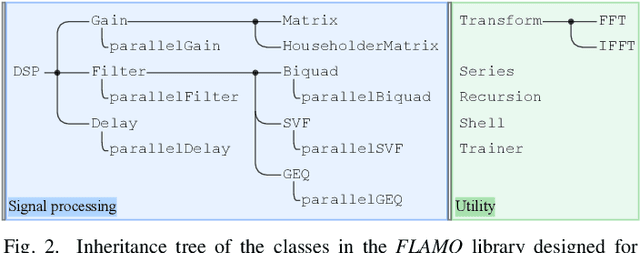

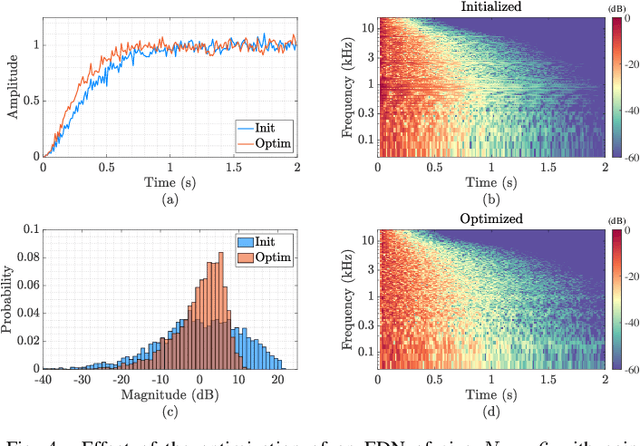
Abstract:We present FLAMO, a Frequency-sampling Library for Audio-Module Optimization designed to implement and optimize differentiable linear time-invariant audio systems. The library is open-source and built on the frequency-sampling filter design method, allowing for the creation of differentiable modules that can be used stand-alone or within the computation graph of neural networks, simplifying the development of differentiable audio systems. It includes predefined filtering modules and auxiliary classes for constructing, training, and logging the optimized systems, all accessible through an intuitive interface. Practical application of these modules is demonstrated through two case studies: the optimization of an artificial reverberator and an active acoustics system for improved response smoothness.
Similarity Metrics For Late Reverberation
Aug 27, 2024

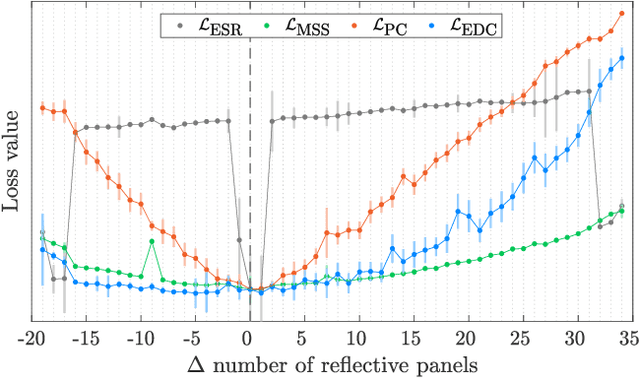
Abstract:Automatic tuning of reverberation algorithms relies on the optimization of a cost function. While general audio similarity metrics are useful, they are not optimized for the specific statistical properties of reverberation in rooms. This paper presents two novel metrics for assessing the similarity of late reverberation in room impulse responses. These metrics are differentiable and can be utilized within a machine-learning framework. We compare the performance of these metrics to two popular audio metrics using a large dataset of room impulse responses encompassing various room configurations and microphone positions. The results indicate that the proposed functions based on averaged power and frequency-band energy decay outperform the baselines with the former exhibiting the most suitable profile towards the minimum. The proposed work holds promise as an improvement to the design and evaluation of reverberation similarity metrics.
Feedback Delay Network Optimization
Feb 17, 2024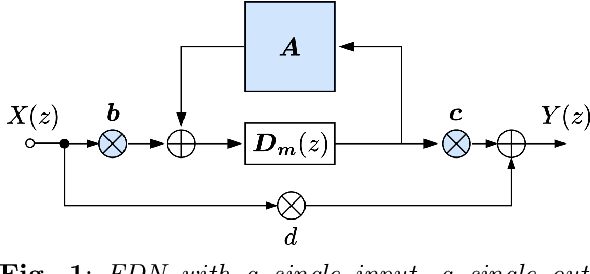

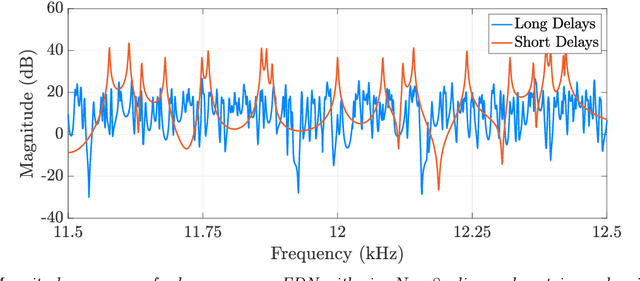

Abstract:A common bane of artificial reverberation algorithms is spectral coloration, typically manifesting as metallic ringing, leading to a degradation in the perceived sound quality. This paper presents an optimization framework where a differentiable feedback delay network is used to learn a set of parameters to reduce coloration iteratively. The parameters under optimization include the feedback matrix, as well as the input and output gains. The optimization objective is twofold: to maximize spectral flatness through a spectral loss while maintaining temporal density by penalizing sparseness in the parameter values. A favorable narrower distribution of modal excitation is achieved while maintaining the desired impulse response density. In a subjective assessment, the new method proves effective in reducing perceptual coloration of late reverberation. The proposed method achieves computational savings compared to the baseline while preserving its performance. The effectiveness of this work is demonstrated through two application scenarios where natural-sounding synthetic impulse responses are obtained via the introduction of attenuation filters and an optimizable scattering feedback matrix.
Damping Density of an Absorptive Shoebox Room Derived from the Image-Source Method
Oct 11, 2023

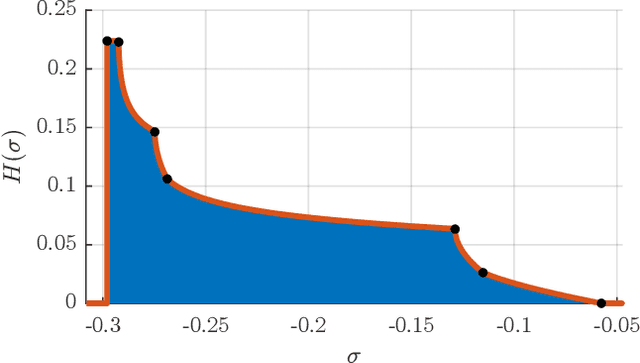

Abstract:The image-source method is widely applied to compute room impulse responses (RIRs) of shoebox rooms with arbitrary absorption. However, with increasing RIR lengths, the number of image sources grows rapidly, leading to slow computation. In this paper, we derive a closed-form expression for the damping density, which characterizes the overall multi-slope energy decay. The omnidirectional energy decay over time is directly derived from the damping density. The resulting energy decay model accurately matches the late reverberation simulated via the image-source method. The proposed model allows the fast stochastic synthesis of late reverberation by shaping noise with the energy envelope. Simulations of various wall damping coefficients demonstrate the model's accuracy. The proposed model consistently outperforms the energy decay prediction accuracy compared to a state-of-the-art approximation method. The paper elaborates on the proposed damping density's applicability to modeling multi-sloped sound energy decay, predicting reverberation time in non-diffuse sound fields, and fast frequency-dependent RIR synthesis.
 Add to Chrome
Add to Chrome Add to Firefox
Add to Firefox Add to Edge
Add to Edge